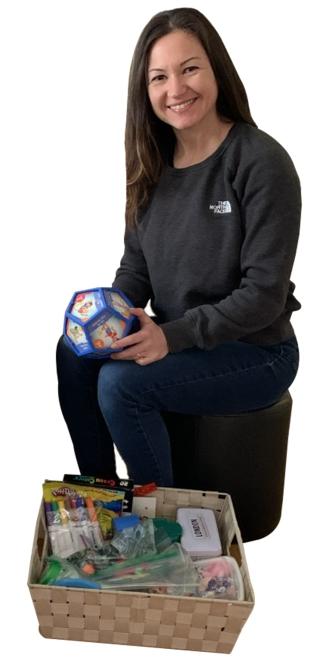As an occupational therapist at PS 231 in Brooklyn, Victoria Kravets helps students with cognitive or physical disabilities develop adaptive skills. During the coronavirus pandemic, Kravets shifted her work online to support students through teletherapy.
What do occupational therapists do?
We help students develop the skills to access and be successful in their educational program, everything from self-help skills to academics. Self-help skills might mean opening containers, using utensils to eat, or unpacking and repacking backpacks. Academics might mean working on attention and sensory needs. We want students to focus on the teacher and not another student or an itch. Most students can do that on their own. Our students might need help managing sensory input — like taking a movement break or doing a task such as making copies — to help them tune out extra sensory input, like the itch, and focus on the teacher. We work with teachers to meet students’ needs, and we try
to make it fun. Students might think they’re playing, but we sneak in the hard work!
How has your work changed since switching to teletherapy?
I’m no longer able to provide physical prompting or hand-over-hand assistance to my students, and I have to rely on visual and verbal instructions. Explaining to caregivers what needs to be done for each activity is challenging at times. However, there are positive aspects. I get help from parents, siblings and relatives. I get to use my creative side. For example, I have been creating weekly videos to demonstrate how to use household objects for hand-strengthening and fine motor games. I made a few sensory-movement videos that my students can follow without special equipment.
How do you work with family members during teletherapy?
Parents were always part of our team, but now they’re involved in every session. Family members see what we do and carry it over to everyday life. Certain activities, such as putting together a puzzle, might seem like playing, but if I explain why it’s helpful — the student is working on posture, body rotation, visual and perceptual skills — they understand. Or, if we’re using tongs to pick up cotton balls, I’ll explain that we’re working on hand-strengthening and grasping. Later, when the student is trying to hold a pencil, either I or the parent can say, “Remember how you were using the tongs to pick up the cotton balls?” I get videos of students practicing exercises on their own time because the family understands why they are important. I want people to know what occupational therapy is because once it makes sense to them, they’re more likely to follow through and benefit from it.
How do you motivate students and build rapport?
I always start my sessions by asking my students how they feel. My verbal students use their words, and my nonverbal students use their communication devices, sign language or pictures to let me know what mood they’re in. I incorporate their interests into our activities and tasks. For example, one of my students is interested in the solar system, so when we cut out shapes, we draw planets to cut out. It’s important to make the students feel valued and successful. I always celebrate their achievements and end sessions with an activity of the student’s choice.
Have you had a favorite moment during teletherapy?
I’ve been making instructional videos, and a student’s mother asked me if I could create a YouTube channel because her son kept searching for more videos. I decided to go for it. During our next session, I surprised him with the name of my YouTube channel, OT Fun with Ms. Vicky, which made him jump and squeal with joy. Later, I received a video message from this student saying, “Thank you so much, Ms. Vicky. I love you!” It’s really rewarding to know we helped a person. That’s what therapists work for.
— As told to reporters Hannah Brown and Rachel Nobel
